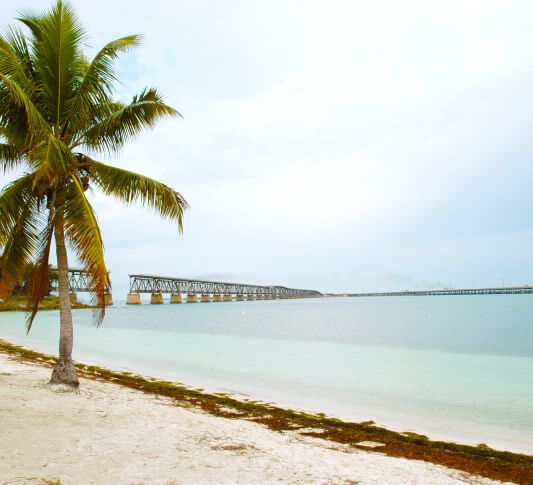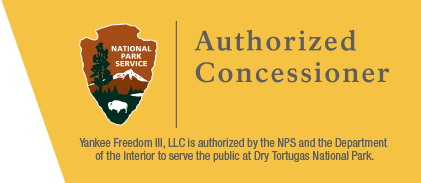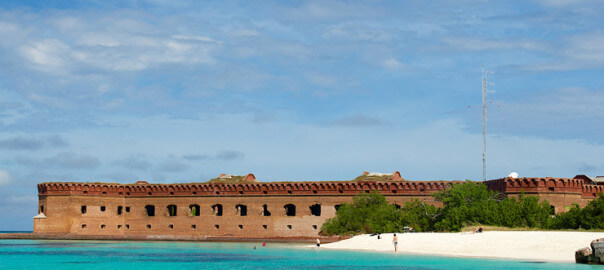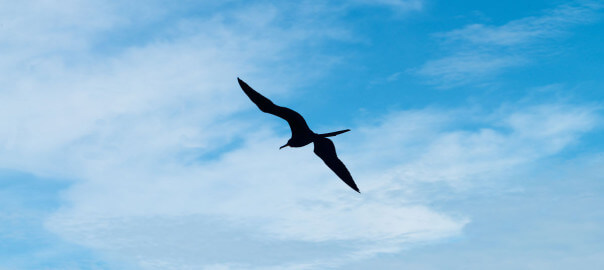Florida State Parks

The Barnacle Historic State Park
This beautiful house with a whimsical name dates to a quieter time. The Barnacle, built in 1891, offers a glimpse of Old Florida during The Era of the Bay. Situated on the shore of Biscayne Bay, this was the home of Ralph Middleton Munroe, one of Coconut Grove´s most charming and influential pioneers. Munroe’s principal passion was designing yachts. In his lifetime, he drew plans for 56 different boats. As a seaman, civic activist, naturalist, and photographer, Commodore Munroe was a man who cherished the natural world around him. A walk into the park passes through a tropical hardwood hammock. In the 1920s, it was representative of the original landscape within the city of Miami. Today, it is one of the last remnants of the once vast Miami Hammock. Enjoy sitting in the rocking chairs on the spacious porch used as a gathering place or on a bench under a tree for solitude.
WEST COAST REGION
Alafia River State Park
This park offers some of the most challenging off-road bicycling trails in Florida. Once the site of a phosphate mine, the reclaimed land has unique topography that offers some of the most radical elevation changes in Florida. Equestrians and hikers can explore 20 miles of trails that travel through mixed hardwood forests, pine flatwoods, and rolling hills. Bird-watchers and nature enthusiasts will delight in the abundance of wildlife along the trails. Scattered lakes and the south prong of the Alafia River provide opportunities for canoeing and fishing. Picnic pavilions, a playground, horseshoe pit, and volleyball court are available. For overnight stays, the park has a full-facility campground and equestrian friendly campsites. Located 10 miles southeast of Tampa on County Road 39.
Anclote Key Preserve State Park
Blue-green Gulf waters lap gently along the preserve´s beautiful four-mile-long beach. Located three miles off the coast of Tarpon Springs, this park is accessible only by private boat. Visitors must bring water and supplies; there are no provisions on the island. The park is home to at least 43 species of birds, including the American oystercatcher, bald eagle, and piping plover. A picturesque 1887 lighthouse stands as a sentinel on the southern end of the island. Visitors can swim and sunbathe at the beach, then fire up a grill and enjoy a picnic. There is no charge for overnight stays in the primitive campground, but campers must check in by calling the park before arrival. For Information about Anclote Key Preserve State Park, call 727- 469 – 5942.
Caladesi Island State Park
One of the few completely natural islands along Florida´s Gulf Coast, Caladesi´s white sand shores have been rated as one of the nation´s best beaches. The park is accessible only by private boat or ferry from Honeymoon Island State Park. Beach lovers can enjoy swimming, sunbathing, and beachcombing. Saltwater anglers can fish from their boats or throw a line out into the surf. Nature enthusiasts watch wildlife while hiking the three mile nature trail through the island´s interior or paddling a three mile kayak trail through the mangroves and bay. Picnic tables and shelters are located near the beach; picnic pavilions can be reserved for a fee. The park has a marina with electric and water hookups for boaters. The park also has a snack bar and gift shop. For ferry information call (727) 734-5263. Located one mile west of Dunedin off the Gulf Coast. For Information about Caladesi Island State Park, please call 727-469-5918.
Cayo Costa State Park
With nine miles of beautiful beaches and acres of pine forests, oak-palm hammocks, and mangrove swamps, this barrier island park is a Gulf Coast paradise. The park is accessible only by private boat or ferry. Visitors may see manatees and pods of dolphins in the waters around the park, as well as a spectacular assortment of birds. On the island, visitors can swim or snorkel in the surf, enjoy the sun, and picnic in the shade. Shelling is especially good during the winter months. Nature trails provide opportunities for hiking and off-road bicycling. Saltwater anglers can fish from their boats or throw a line out into the surf. An amphitheater provides educational programs about the island�s ecology and history. For overnight stays, the park offers primitive cabins and tent camping. For ferry information and reservations call (239) 283-0015, located at Pineland Marina, 13921 Waterfront Drive, Pineland, Florida 33945, due East of Cayo Costa and West of Cape Coral and N. Ft. Meyers. For Information about Cayo Costa State Park, please call 941-964-0375.
Charlotte Harbor
Ringing Charlotte Harbor like a necklace of mangroves, the park provides vast areas of unspoiled scenery and vital habitat for many varieties of wildlife. The Charlotte Harbor Estuary is one of the most productive in the state and five aquatic preserves have been established in the water bodies adjacent to the park. The Mangrove forests and salt marshes comprise the majority of the park, but public access points have been established at strategic upland points in each area of the park. The Charlotte Harbor Environmental Center (CHEC)Charlotte Harbor Environmental Center is located within the park at 10941 Burnt Store Road in Punta Gorda. CHEC is a non-profit group that has a visitor’s center, offers environmental education programs, interpretive guided hikes, and approximately 6 miles of marked trails. The Old Datsun Trail is located at 12301 Burnt Store Road in Punta Gorda. This trail is approximately 1.75 miles long and traverses oak/palm hammocks, pine flatwoods and wetland sloughs. The Little Pine Island High Marsh Trail is located on the north side of Pine Island Road between Matlacha and Pine Island. This trail is approximately 2 miles long and traverses salt marsh, freshwater marsh and mangrove forests. The Catfish Creek Trailhead is located on the east side of County Road 771 approximately 1 1⁄2 miles north of Placida. A picnic pavilion is available for visitors to use at this site. Pine flatwoods, freshwater marshes, and salt marshes are accessible from this trailhead. Visitors are welcome to explore other areas of the park, unless posted as closed, but should be aware that these areas are remote and primitive wilderness. Visitors should take a compass, a map, and sufficient water for their trip. Almost all areas of the park are wetlands and are subject to periodic flooding. Heat, muddy trails, and mosquitoes are common elements of natural Florida. Visitors should be prepared to encounter all of them. For Information about Charlotte Harbor, please call (941) 575 – 5861.
Collier-Seminole State Park
This park features a wealth of vegetation and wildlife typical of the Everglades, plus a forest made up of tropical trees. Although rare elsewhere, the Florida royal palm is a common tree here. The park is also the site of a National Historic Mechanical Engineering Landmark, the Bay City Walking Dredge. Built in 1924, it was used to build the Tamiami Trail highway (U.S. 41) through the Everglades, linking Tampa to Miami. Hiking, bicycling, and canoeing trails offer opportunities for visitors to explore the park´s remarkable wilderness. The park has canoe rentals along with a boat ramp that provides access to the Blackwater River, where anglers can enjoy both freshwater and saltwater fishing. Campers can spend the night in a full-facility campground; youth/group and primitive campsites are also available. The picnic areas have pavilions and grills for use on a first-come-first-served basis. Located on U.S. 41, 17 miles south of Naples. For Information about Collier-Seminole State Park, please call 239-394-3397.
Dade Battlefield Historic State Park
The battle that started the Second Seminole War is commemorated in January each year under the oaks of Dade Battlefield. On December 28, 1835, Seminole Indian warriors ambushed 108 soldiers at this site-only three soldiers survived. The park protects not only a historic battlefield, but also the natural communities as they existed when the soldiers and Seminoles battled over 180 years ago. Strolling a half-mile nature trail through pine flatwoods, visitors might see gopher tortoises, woodpeckers, songbirds, hawks, and indigo snakes. The park has a playground, picnic area with covered shelters, and a recreation hall. The visitor center has information and displays about the battle and visitors can watch a twelve-minute video history, This Land, These Men. The center is open 9:00 a.m.-5:00 p.m. daily. Located off I-75, exit 314, west of U.S. 301. For Information about Dade Battlefield Historic State Park, please call 352-793-4781.
Delnor-Wiggins Pass State Park
One of the most popular seashore destinations in Naples, this park’s mile-long stretch of white sugar sand has been rated as one of the best beaches in the nation. The beach is popular for sunbathing, swimming, beachcombing, snorkeling, and picnicking. Fishing at the beach along Wiggins Pass, where swimming is not allowed, is another popular activity. For saltwater or freshwater fishing, boaters can launch their vessels into Water Turkey Bay and travel to the Gulf or up the Cocohatchee River. Kayakers can enjoy paddling through estuaries; scuba divers can explore the hard bottom reef in the Gulf. At the north end of the island, a tower gives visitors a bird’s-eye view of Wiggins Pass and the surrounding coastal habitat. NOTE: To avoid overcrowding during the busy winter season, the park closes its gates when it reaches maximum capacity. Located in North Naples five miles west of I-75-exit 111. For Information about Delnor-Wiggins Pass State Park, please call 239-597-6196.
Don Pedro Island State Park
This beautiful little island is part of an extensive chain of barrier islands extending along the Gulf Coast of Florida. Between Knight Island and Little Gasparilla Island, Don Pedro is accessible only by private boat. Boaters can tie up at the dock on the bay side of the island, which is lined with mangroves. Access to the dock is through a 2.5 -foot – deep channel south of the Cape Haze power line crossing. Visitors might see endangered animals such as West Indian manatees, gopher tortoises, bald eagles, and American oystercatchers. With a mile of white sand beach, popular activities on the island´s Gulf side include sunbathing, swimming, snorkeling, and shelling. Boat and surf fishing are also favorite pastimes. For hiking and nature study, trails meander through the island´s 11 natural communities. Located off the coast of Cape Haze about nine miles south of Englewood. Boating location is Nautical Waterproof Chart #25. Intracoastal Waterway directional signs guide visitors to the park. For Information about Don Pedro Island State Park, please call 941- 964 – 0375.
Egmont Key State Park
Although this park is primarily a wildlife refuge, it can be a personal refuge – a place to relax and collect shells along secluded, pristine beaches. Accessible only by private boat, Egmont Key has a unique natural and cultural history, including a lighthouse that has stood since 1858. During the 19th century, the island served as a camp for captured Seminoles at the end of the Third Seminole War and was later occupied by the Union Navy during the Civil War. In 1898, as the Spanish – American War threatened, Fort Dade was built on the island and remained active until 1923. After touring the historic sites and trails, visitors can enjoy swimming, fishing, wildlife viewing, and picnicking. Located at the mouth of Tampa Bay, southwest of Fort DeSoto Beach. For Information about Egmont Key State Park, please call 727- 893 – 2627.
Pages: 1 2 3 4 5 6 7 8 9 10 11 12 13 14 15 16



